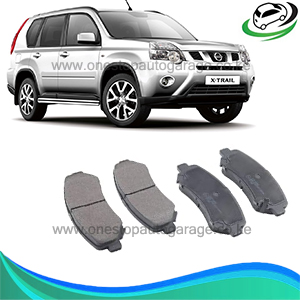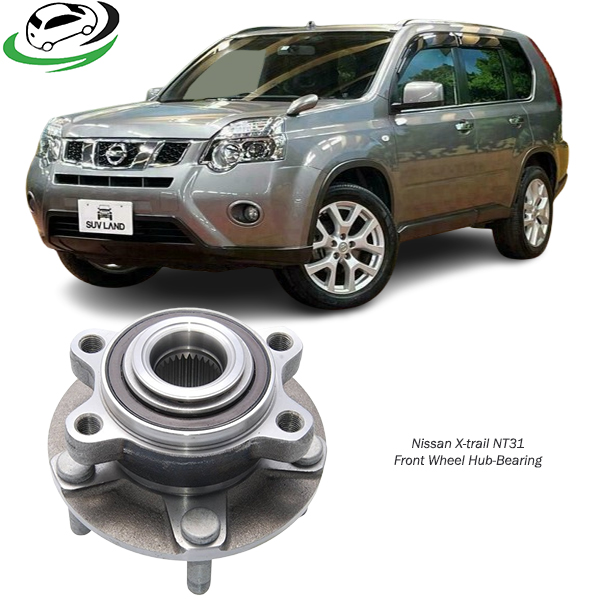-6%
Get Nissan X-trail NT31 Front Wheel Hub-Bearing 40202-JG000 in Kenya
The front wheel hub bearing is a vital part of the wheel assembly in any vehicle. It allows the wheel to spin freely while providing stable support, which is essential for smooth vehicle handling, braking efficiency, and overall safety. Understanding the structure, function, benefits, symptoms of wear, maintenance requirements, and replacement procedures for a front wheel hub bearing is crucial for vehicle owners. This guide will provide an in-depth look at these aspects, offering a comprehensive overview of the front wheel hub bearing’s importance.
Structure of the Front Wheel Hub Bearing
The front wheel hub bearing is a highly engineered component that comprises several key elements:
- Outer Race:
- The outer race is the exterior part of the bearing, and it is typically pressed into the wheel hub assembly.
- Inner Race:
- The inner race sits snugly against the axle shaft and rotates along with the wheel, providing a surface on which the rolling elements travel.
- Rolling Elements (Bearings):
- These are typically ball bearings or tapered roller bearings, which reduce friction by allowing smooth rotation between the inner and outer races.
- Cage (Retainer):
- The cage holds the rolling elements in place and prevents them from contacting each other, which helps maintain alignment and reduces friction.
- Seals:
- Seals protect the bearing from dirt, moisture, and other contaminants while keeping lubrication inside. Sealed bearings are often pre-lubricated, which minimizes maintenance.
The hub bearing assembly may also contain an integrated speed sensor that works with a vehicle’s Anti-lock Braking System (ABS). This sensor monitors the speed of the wheel and sends signals to the ABS control module to improve braking stability.
Functions of the Front Wheel Hub Bearing
The front wheel hub bearing is crucial for multiple aspects of vehicle performance:
- Facilitating Wheel Rotation:
- The primary role of the front wheel hub bearing is to allow the wheel to rotate smoothly. This is essential for a vehicle’s mobility and maneuverability.
- Supporting Vehicle Weight:
- The front wheel hub bearing supports a substantial portion of the vehicle’s weight, including the engine, transmission, and front suspension.
- Reducing Friction:
- The bearing minimizes friction between moving parts, which prevents overheating and wear, contributing to efficient operation.
- Ensuring Vehicle Stability and Handling:
- Properly functioning hub bearings contribute to stability by maintaining the correct wheel alignment, which is crucial for steering accuracy and cornering control.
- Providing a Noise-Free Ride:
- A well-maintained front wheel hub bearing operates quietly, enhancing the comfort of the ride by reducing vibration and noise.
Benefits of a Quality Front Wheel Hub Bearing
Using a high-quality front wheel hub bearing offers numerous advantages:
- Enhanced Safety:
- High-quality bearings ensure reliable performance, reducing the risk of bearing failure, which can lead to wheel detachment or poor handling, especially at high speeds.
- Extended Lifespan:
- Superior materials and manufacturing precision contribute to the longevity of quality bearings, reducing the need for frequent replacements.
- Improved Handling and Stability:
- Quality bearings help maintain wheel alignment, which improves handling characteristics and enhances overall vehicle control.
- Quieter Operation:
- Premium bearings operate smoothly, reducing noise and vibrations, which translates to a more comfortable ride.
- Reduced Maintenance Costs:
- High-quality bearings require minimal maintenance, saving time and reducing repair costs over the lifespan of the vehicle.
Symptoms of a Failing Front Wheel Hub Bearing
Identifying the signs of a failing front wheel hub bearing is essential for ensuring timely repairs and avoiding potential safety issues. Common symptoms of bearing wear include:
- Grinding or Humming Noise:
- A noticeable grinding or humming noise from the front wheels is often the first sign of a worn or damaged hub bearing. This noise usually intensifies with speed.
- Vibration in the Steering Wheel:
- A faulty hub bearing can cause vibrations that are felt in the steering wheel, especially during cornering or braking.
- Uneven Tire Wear:
- A damaged bearing can lead to wheel misalignment, which results in uneven tire wear. Inspect tires regularly for any unusual wear patterns.
- ABS Warning Light:
- If the wheel hub bearing includes an integrated speed sensor for the ABS, a failing bearing may cause the ABS warning light to activate.
- Wheel Play or Looseness:
- When a front wheel hub bearing is worn out, it may allow excessive movement in the wheel. This play can be detected by lifting the vehicle and checking for wobbling.
Maintenance of Front Wheel Hub Bearings
Maintaining the front wheel hub bearings is essential for extending their life and ensuring safety. Here are some key maintenance practices:
- Regular Inspections:
- Routine visual inspections can reveal early signs of wear. Check for leaks, unusual noises, or visible damage.
- Tire Rotation and Alignment:
- Rotating tires regularly helps to ensure even wear, which can reduce strain on the bearings. Proper wheel alignment is also critical for bearing longevity.
- Sealed Bearings Require Minimal Lubrication:
- Most modern front wheel hub bearings are sealed and come pre-lubricated. These do not require additional lubrication, but it’s important to follow the manufacturer’s guidelines.
- Check for Dust and Water Ingress:
- Seals are designed to protect the bearing from contaminants. Damaged or worn seals should be replaced promptly to prevent contaminants from entering the bearing assembly.
- Avoid Overloading:
- Exceeding the vehicle’s load capacity can place undue strain on the bearings. Avoid overloading to prevent premature bearing failure.
Replacing a Front Wheel Hub Bearing
When a front wheel hub bearing shows signs of wear or fails, replacement is often necessary. Here’s a general outline of the replacement process:
- Lifting the Vehicle:
- Use a jack to lift the vehicle securely and remove the wheel to access the hub bearing assembly.
- Removing the Brake Components:
- Detach the brake caliper and rotor to expose the hub assembly. Make sure to handle brake parts carefully to avoid damage.
- Disconnecting the Hub Assembly:
- Depending on the vehicle, you may need to unbolt the hub assembly from the knuckle or disconnect it from the axle.
- Installing the New Bearing:
- After removing the old bearing, carefully install the new one, ensuring that it is properly seated and aligned.
- Reassembling the Components:
- Reattach the brake components and wheel, then lower the vehicle. Always follow the manufacturer’s specifications for torquing bolts and lug nuts.
- Test Drive:
- After completing the installation, perform a test drive to ensure the new bearing is operating smoothly and there are no unusual noises or handling issues.
Conclusion
The front wheel hub bearing is an essential component that affects a vehicle’s handling, safety, and comfort. A well-maintained, high-quality bearing provides smooth and stable wheel rotation, supports the vehicle’s weight, and reduces vibrations and noise. Recognizing the symptoms of a failing bearing, performing regular inspections, and timely replacement can ensure optimal performance and prolong the lifespan of the front wheel hub assembly. For any maintenance or replacement, it is advisable to consult a professional mechanic to ensure safe and effective repairs.
Follow us on Facebook for more parts.



